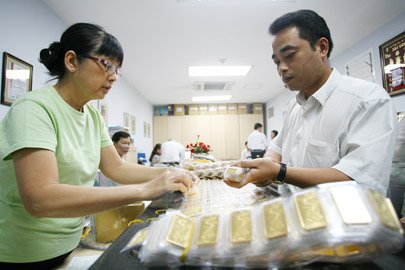Salt off to a shaky start as weather disappoints
Salt off to a shaky start as weather disappoints
Less-than-ideal rainfall patterns in January and early February have kept salt production in Kampot province at a pretty low level this season, or below two kilotonnes by some approximations, whereas an estimated 70-100 kilotonnes per annum are required to meet domestic consumption demand.
This is what Sok Kim Choeun, director of the Kampot provincial Department of Industry, Science, Technology and Innovation, told The Post in an interview on March 6.
However, this does not necessarily mean that Cambodia will need to import salt again this year, industry veteran Bun Narin assured The Post.
The vast majority of the Kingdom’s salt farms are in Kampot and the neighbouring province of Kep, and the harvest season typically falls between early January and May each year, although it may begin earlier and extend longer with hotter temperatures and less precipitation. Under good weather conditions, each hectare can yield an average of 20 tonnes per annum.
The Ministry of Industry, Science, Technology and Innovation reports that the total area under salt production in Kampot and Kep provinces was 4,748ha in 2021 and did not significantly change in 2022. Some sources have also put last year’s figure at 4,748ha.
Kim Choeun commented that “two or three” spells of heavy rains in Kampot’s salt production areas year-to-early-February considerably delayed harvests, with preliminary data indicating that output barely passed 0.9 kilotonnes as of February 28 and may very well still be below the two-kilotonne mark to-date.
According to him, sufficiently high temperatures, minimal rainfall and otherwise favourable weather conditions over three consecutive months during the salt season could bring output up to more than 100,000 tonnes, in excess of annual domestic demand with plenty more left for storage.
Kim Choeun declined to provide an estimate for total salt yields in 2023, merely reiterating that harvests have been behind pace compared to previous years, and noting that “production depends entirely on nature” – alluding to the traditional way in which Cambodian salt is typically gathered, to which he attributed its reputation for good quality.
Narin, owner of Kampot-based Thaung Enterprise, similarly claimed that overall salt production is two months behind schedule, and gauged that only about 30 per cent of the salt fields are being harvested, with the rest to follow within the week.
If weather conditions remain as hot and in other ways favourable as on March 6 until end-May, Cambodia will not be short of salt, he stated.
However, the delays have led to a drop in the prices of salt purchased directly from the fields, from 25,000-28,000 riel ($6.25-$7.00) per 50kg sack in early February to 22,000-23,000 riel now, he noted.
“Activities on the salt fields have resumed, and production is steadily increasing,” Narin affirmed.
Meanwhile, the Ministry of Commerce has tentatively set April 26 for the “launch” of “Kampot-Kep Salt” as a geographical indication (GI) product, in a formal recognition of its inclusion in the Cambodian registry and the accompanying protections.
Industry insiders are expecting the GI status to drive a marked lift in the profile of the commodity – and Cambodian salt as a whole – on the international arena, as well as dramatic growth in overseas sales.
A GI is an intellectual property (IP) tool that protects products originating or otherwise strongly linked to a specific geographical region, and that possess particular qualities, reputations or other characteristics that are fundamentally attributable to their territory of origin. GI products are generally accompanied by a sign to distinguish them from unauthorised analogues.
The product will be able to be traded under the GI-protected name in either rock or ground form, or as “fleur de sel” – a French term that translates to “flower of salt” – which forms as a delicate, flaky crust on the surface of seawater as it evaporates, the Ministry of Commerce’s Department of Intellectual Property Rights – also known as CambodiaIP – confirmed in a statement last month.
The Kampot industry department’s Kim Choeun is confident that the GI tag will give the local community a real boost of motivation; pump up prices and production capacity; and minimise impact from labour shortages, climate stress and related issues that he said forced the Kingdom in previous years to import salt just to meet domestic demand.
The Post understands that Cambodia has only ever imported salt from India and mainland China, with the latest shipment from the latter arriving back in 2018.
And, Bun Baraing, a Kampot-based salt producer and owner of a company that ships in the commodity from India, previously confirmed to The Post that the Kingdom imported in excess of 20 kilotonnes of the mineral from the South Asian country last year.














